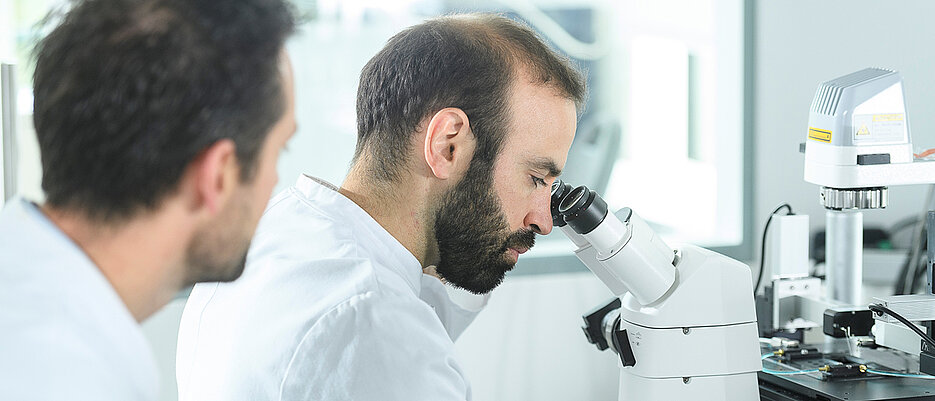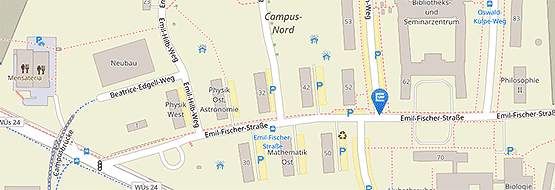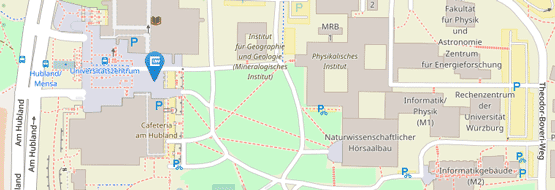So that Every Heartbeat Gets the Energy It Needs
10/28/2025In a new study, an international research team involving the University Hospital of Würzburg has shown why energy transport can fail in the most common hereditary heart disease.

It is the most common hereditary heart disease: hypertrophic cardiomyopathy (HCM). It causes the left ventricle to thicken, the heart muscle to contract too much and work excessively hard. This additional strain stresses the energy system of the cells, the mitochondria, and can increase the risk of dangerous cardiac arrhythmias.
Creatine kinase plays a key role in maintaining the balance between energy consumption and production. The enzyme helps the heart to recycle energy quickly so that every heartbeat receives the energy it needs. What role does the enzyme play in HCM? Researchers from the Department Translationale Forschung at the Deutsches Zentrum für Herzinsuffizienz (DZHI) at the University Hospital of Würzburg have investigated this together with national and international cooperation partners. The findings were published in the journal Circulation.
Increased Risk of Heart Rhythm Disturbances
"We found that overloading the heart muscle causes the mitochondria to produce more hydrogen peroxide. This reactive oxygen molecule normally occurs in small quantities as a by-product; too much of it can stress or damage the cells over a longer period of time," explains Anton Xu, PhD student at the DZHI and lead author of the study.
In HCM, oxidative stress switches off creatine kinase at two important sites: at the filaments, where muscle strength is generated, and at the mitochondria, where energy is produced. "This means that if creatine kinase is switched off, the heart cannot keep energy constant where it is needed most. This increases the risk of heart rhythm disturbances and causes additional stress," the researcher continues.
Positive Effect of Certain Inhibitors
The team was able to observe these changes in heart biopsies from people with HCM and confirm both the cause and the positive effect of a myosin inhibitor in several laboratory models. These inhibitors reduce the interaction between the proteins actin and myosin, which leads to more relaxed heart muscles.
"In our studies, we also showed that under the effect of the myosin inhibitor, hydrogen peroxide levels decreased, creatine kinase function was preserved and abnormal heart rhythms were reduced," reports Dr. Vasco Sequeira, last author of the study, "so our results suggest that treatments that reduce cardiac workload and limit oxidative stress may help restore energy balance and improve outcomes in HCM."
Unprecedented Insight into the Workings of the Heart
In the next step, the team will focus on an advanced form of cardiomyopathy: hypertrophic obstructive cardiomyopathy (HOCM). In this disease, a constriction in the outflow tract of the left ventricle causes additional resistance to the blood flowing out of the heart. As a result, the heart has to work even harder with every beat.
Together with partners at the National Cerebral and Cardiovascular Centre in Osaka, the researchers from Würzburg want to develop realistic animal models. Using a special high-resolution X-ray system, they will then be able to observe the heart's tiny myosin motors, i.e. the molecular machines for contraction, in real time during each heartbeat at the Japanese Synchrotron Radiation Research Institute Spring 8 in Harima.
"This gives us an unprecedented insight into how the heart works, beat by beat, and allows us to study how well the smallest blood vessels supply the heart muscle with blood and how efficiently these cells produce and transport energy," says Sequeira enthusiastically.
Identifying Patients who will Benefit from the Treatment
In order to better reflect reality, the team will also investigate metabolic stress, for example the negative effects of a high-fat diet. Subsequently, it will also be investigated whether reducing the obstruction-related stress on the heart muscle with myosin inhibitors restores the heart's energy transport, stabilises the energy supply and reduces the risk of cardiac arrhythmias.
"Our aim is to develop simple measurements that help doctors to identify those patients with HOCM who are most likely to benefit from these relieving treatments," summarises Professor Christoph Maack, Head of Translational Research and spokesperson for the DZHI.
International Collaboration and Funding
In addition to the University Hospital of Würzburg, the following institutions were involved: National Cerebral and Cardiovascular Centre (Japan), Monash University and Victor Chang Cardiac Research Institute (Australia), Erasmus MC and Amsterdam UMC (Netherlands), University Medical Center Hamburg-Eppendorf/DZHK, University of Glasgow (UK) and University of Porto (Portugal) as well as cooperation partners in the USA such as Mississippi State University and Vanderbilt University.
The work was supported by national and international institutions, including the German Research Foundation, the German Centre for Cardiovascular Research and the Japan Society for the Promotion of Science. The company Bristol Myers Squibb provided support in connection with the myosin inhibitor used in some of the experiments.
Publication
Anton Xu, David Weissman, Katharina J. Ermer, Edoardo Bertero, Jan M. Federspiel, Felix Stadler, Elisa Grünler, Melina Tangos, Sevasti Zervou, Mark T. Waddingham, James T. Pearson, Jan-Christian Reil, Smita Scholtz, Jan Dudek, Michael Kohlhaas, Alexander G. Nickel, Lucie Carrier, Thomas Eschenhagen, Michelle Michels, Cris Dos Remedios, Sean Lal, Leticia Prates Roma, Nazha Hamdani, Diederik Kuster, Inês Falcão-Pires, Christopher N. Johnson, Craig A. Lygate, Jolanda van der Velden, Christoph Maack, Vasco Sequeira. Hypercontractility and Oxidative Stress Drive Creatine Kinase Dysfunction in Hypertrophic Cardiomyopathy, Circulation (American Heart Associationi), October 2025, https://doi.org/10.1161/CIRCULATIONAHA.125.074120






